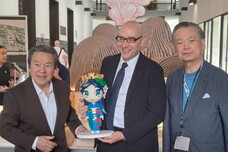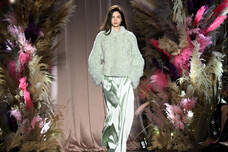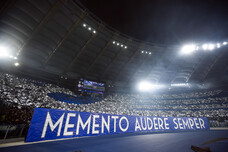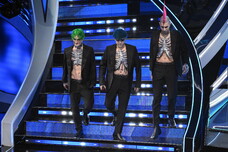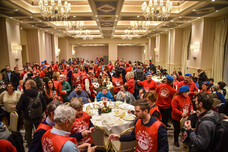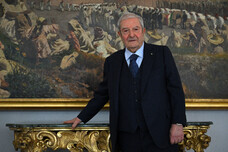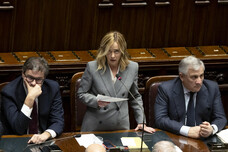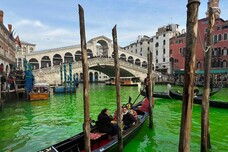The work of Italian Mannerist painter Giuseppe Arcimboldi (1526-1593), known as Arcimboldo, is present for the first time in Rome in a major exhibition in Palazzo Barberini until February 11.
The show features approximately 20 works by the artist famous for his imaginative portrait heads made of objects such as flowers, fruit and animals that made him one of the protagonists of 16th century Lombard culture.
Organised by the National Galleries of Ancient Art in Rome
and Mondo Mostre Skira, the exhibition (free to under 18s) has
been curated by Sylvia Ferino-Pagden, a leading expert on the
Milanese painter.
Overall it presents around 100 works including many by
Arcimboldo's contemporaries as well as art objects, tapestries,
mosaics, botanical drawings and drawings of the animal kingdom
that reconstruct the intellectual breeding ground dominated by a
renewed love of science in which the painter's individual talent
was born and thrived.
Arcimboldo trained in his father's workshop among followers
of Leonardo and was the much-appreciated exponent of an
artistic, scientific, philosophical and humanist trend that was
far removed from the classical style seen in Rome in that
period.
His 'ridiculous paintings' and composite heads bringing
together the taste for caricature and the passion for observing
nature made him one of the protagonists of international
mannerist culture.
Arcimboldo worked for the Habsburg courts of Vienna and
Prague, in the service of Ferdinand I, Maximilian II and Rudolf
II, where he was even given the noble title of Count palatine, a
rarity for an artist.
The itinerary starts with a section dedicated to the Milanese
environment in which Arcimboldo grew up, before going on to
examine the period spent in Vienna and Prague as portrait
painter to the Habsburg court.
This section features the portrait of the Archduchess Anna,
studies for parties and the subsequent personification of the
four seasons in a dialogue with the four elements.
The latter work is on show for the first time in at least 20
years.
Next come the so-called reversible heads, ambiguous still
life images that look totally different if rotated 180 degrees.
"They are playful and strange images where however nothing is
left to chance," explains the director of the National Galleries
of Ancient Art in Rome, Flaminia Gennari Santori.
The artworks in fact represent "a very serious rhetorical
game, a sort of engagement with the visitor's intellect," she
added.
ALL RIGHTS RESERVED © Copyright ANSA

